Last Updated on December 1, 2022
The Disney character Dumbo is often illustrated with elephant ears sticking out of the sides of his head, so it’s no surprise that these beautiful pet fish have been given this name as well.
Betta elephant ear or dumbo halfmoon betta got their names from how much they resemble giant elephants (a.k.a big elephant-like “ears”) on their humungous fins and tail.
In this article, we’ll answer your questions about this aquarium fish and provide helpful tips on properly caring for your elephant ear betta fish.
Table of Contents
Dumbo betta fish care sheet
| Minimum Tank Size: | 5 Gallons |
| Diet: | Protein-rich diet |
| Average Lifespan: | 3-5 years |
| Size: | Approximately 2.5-3 inches |
| Disease: | The common ones include popeye, fin rot, fin infection, and bacterial infection from leftover food |
| Decorations: | Plants and toys |
| Tank Maintenance: | Weekly partial water renewal with a water temperature of 72 to 82 Fahrenheit (22.2 – 27.8 Celcius) |
What is Dumbo Halfmoon Betta Fish (Elephant Ears Betta)?
Appearance
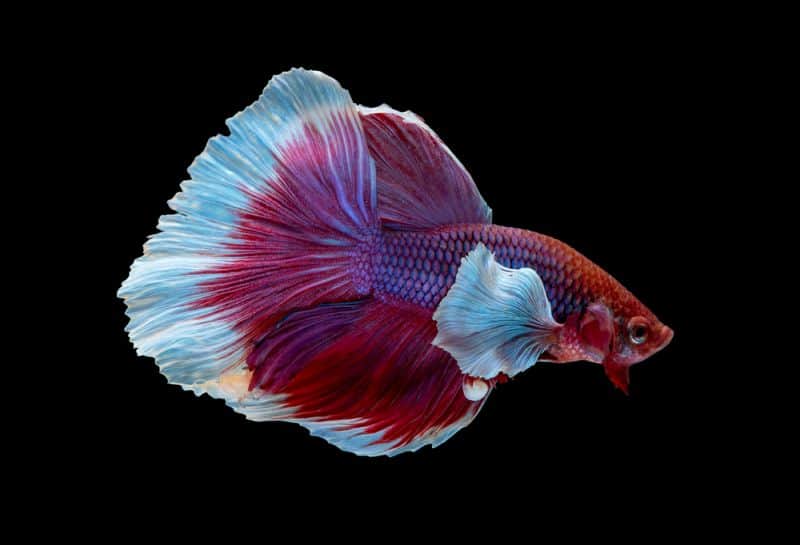
The elephant ear betta is a very unusual fish. Although they tend to have shorter tails, their broad and long pectoral fins resemble the ears of an elephant – making them look like they’re flying through water!
Despite the reputation of male betta as the more boisterous and aggressive gender, it turns out that female betta fish are sought after in some circles.
Male dumbo bettas often have shorter and less elaborate tails than females of this variety. This makes males less popular among certain aquarists because they don’t stand out nearly as much with drab colors.
For those who want an impressive-looking girlish fish in their fish tank, female elephant ear betta fish are your best option due to their extended pectorals – making them very eye-catching!
Color
Having huge fins and tail help these fish swim around as they move through the water and are especially helpful when navigating around in aquariums – where their colors become more pronounced.
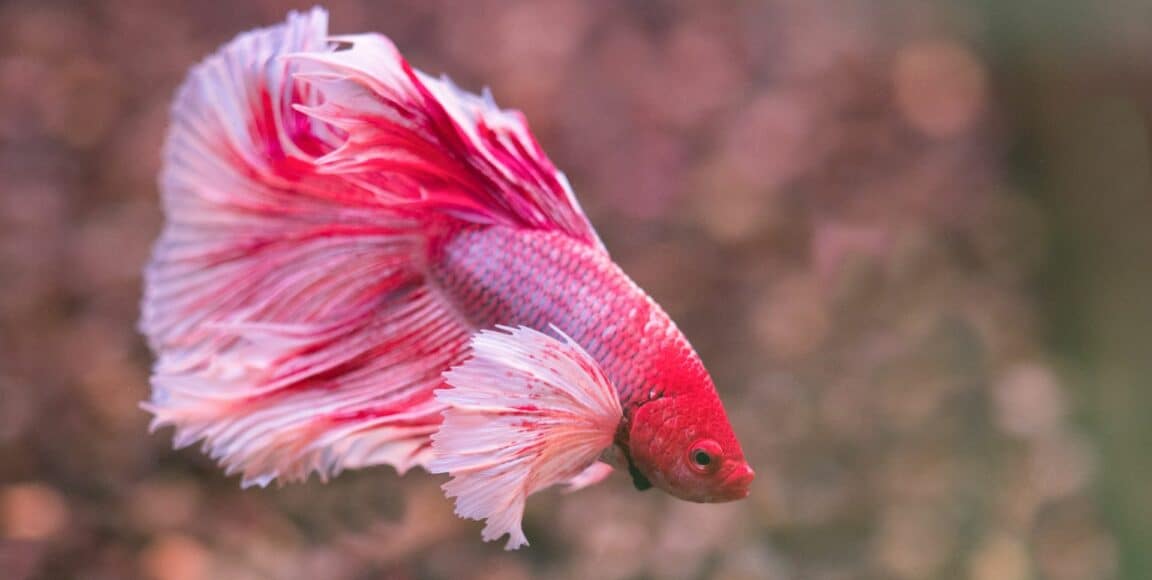
The colors of elephant ear betta fish in captivity are strikingly different from those in nature. The blue, light green and even bright pink starkly contrast with the brown and gray of those elephant ear betta found in the wild.
Researchers say this change occurs because they grow up with fewer predators who would otherwise be attracted by these more common colors.
Size
A full-grown elephant ear betta fish is about 6.5 cm (2.5 inches) on average but, on some occasions, may reach up to 8.9cm (3.5 inches) in length.
These beautiful betta fish have slim profiles that make their huge, flowing fins look even bigger than their actual body!
Origin
So how was this betta fish first discovered?

The elephant ear betta fish is native to Southeast Asia, specifically the Mekong Delta.
The Siamese fighting fish is also found in Myanmar, Laos, and Cambodia. Nowadays, however, it is believed that these fish originated in Thailand.
The elephant ear betta also naturally lived in shallow waters with a gentle water flow such as in rice paddies, canals, and floodplains.
Because of their small frame, these betta fish dislike moving water and can only survive in calm and still waters – which is why they do so well in aquariums.
Created from captive breeding, dumbo halfmoon bettas elongated pectoral fins crop up randomly on a spawn once in a while, so it isn’t hard to imagine how this created the first dumbos when bred by accident!
Unfortunately, elephant ear betta fish are considered vulnerable and endangered since their habitats are becoming increasingly polluted due to the rapid development of their native countries.
Lifespan
Elephant ear bettas surprisingly have a long lifespan. They can live up to three to five years if kept in the right conditions, with proper nutrition and regular tank maintenance being critical factors for extending that range.
There’s even a documented case of an elephant ear betta living up to 10 years! However, this will only be possible if you provide them with a great and healthy environment.
Behavior
The dumbo halfmoon is a fighting fish belonging to the gouramis family. A male elephant ear betta is infamous for attacking other males, even in their own species, which makes it impossible to house two male betta together in one tank.
These bettas are also quite territorial, so it’s best to keep them in their own aquarium.
However, female elephant ear bettas are more peaceful and can live with up to four females in the same aquarium. Adding more than that can cause aggression between the elephant ear bettas.
Care guide for your elephant ear betta fish
Betta Fish Tank Requirements
People tend to think that their betta can live in small containers considering their small size. However, having a small space can do more harm than good and may cause future health problems.
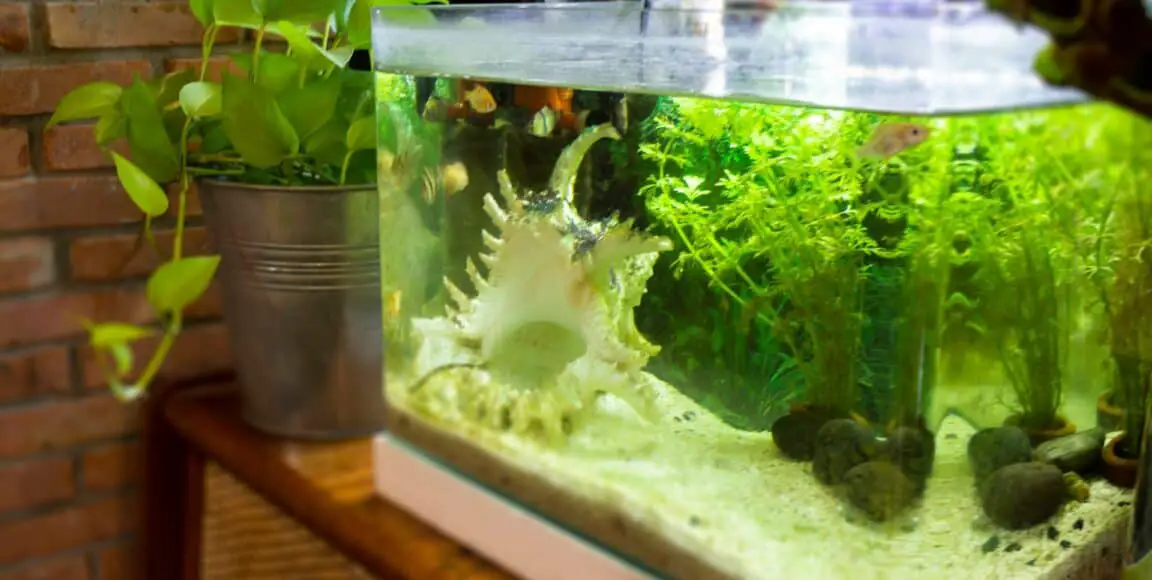
This is because elephant ear bettas need adequate space to swim and explore.
Additionally, a bigger fish tank tends to have a more stable temperature, which is crucial for elephant ear bettas since they are sensitive to sudden changes in temperature.
If you want a happy, healthy betta fish in your home, the tank size must match what they need.
The recommended minimum tank size for an elephant ear betta fish and other betta is at least a 5-gallon tank.
But if possible, you can go for as big as 20-gallon tanks or more to give your fish enough space to swim freely and have their hiding places.
Recommended 5-gallon tank
- SLEEK DESIGN: Rounded corners and clear glass canopy allow viewing from multiple angles.
- DAYLIGHT/MOONLIGHT LIGHTING: Bright white LEDs create a shimmering sunlight effect; blue LEDs produce a moonlit glow.
- EASY ACCESS: Hinged LED lighting and sliding glass canopy.
- SIZE: 5-gallon aquarium fits Marineland Rite-Size Z Filter Cartridges.
- HIDDEN FILTRATION: Advanced, 3-stage filtration is out of sight, enhancing aquarium viewi
Prices pulled from the Amazon Product Advertising API on:
Product prices and availability are accurate as of the date/time indicated and are subject to change. Any price and availability information displayed on [relevant Amazon Site(s), as applicable] at the time of purchase will apply to the purchase of this product.
- Actual Dimensions: 22.94 x 11.38 Fits most 24 x 12 Aquariums
- DOMED HOOD: Sleek design with energy-efficient LED light bar.
- NATURAL EFFECT: White LEDs create a shimmering illumination that mimics sunlight’s natural underwater effect.
- NIGHT LIGHT EFFECT: Enjoy your aquarium at night by switching to the blue night light mode.
- HINGED: Includes two sets of hinges to fit most popular frame sizes – for easy access during maintenan
Prices pulled from the Amazon Product Advertising API on:
Product prices and availability are accurate as of the date/time indicated and are subject to change. Any price and availability information displayed on [relevant Amazon Site(s), as applicable] at the time of purchase will apply to the purchase of this product.
Related: What Is the Best 20 Gallon Fish Tank for Your Betta?
Another thing to consider in choosing your fish tank is that it shouldn’t be too deep.
Bettas thrive in shallow water because their labyrinth organ allows them to breathe air on the water’s surface.
A long-time aquarist mentioned that your tank shouldn’t exceed 12 inches in depth so your elephant ear betta can swim up to the surface to breathe.
Water Temperature
The recommended water temperatures for betta fish are between 72 to 82 Fahrenheit (22.2 – 27.8 Celcius).
Bettas, who are native to Southeast Asia, are tropical fish which is why you should invest in a good water heater. Testing the water periodically using a thermometer can also be helpful to make sure it is just right!
In case of a water change, be sure that the water you’re putting in your tank is just as warm as the recommended temperature. Abrupt changes will shock them and will not be suitable for their health!
Moreover, before moving your elephant ear betta fish back to the tank, ensure you acclimate so it can slowly get used to the water temperature.
Filtration
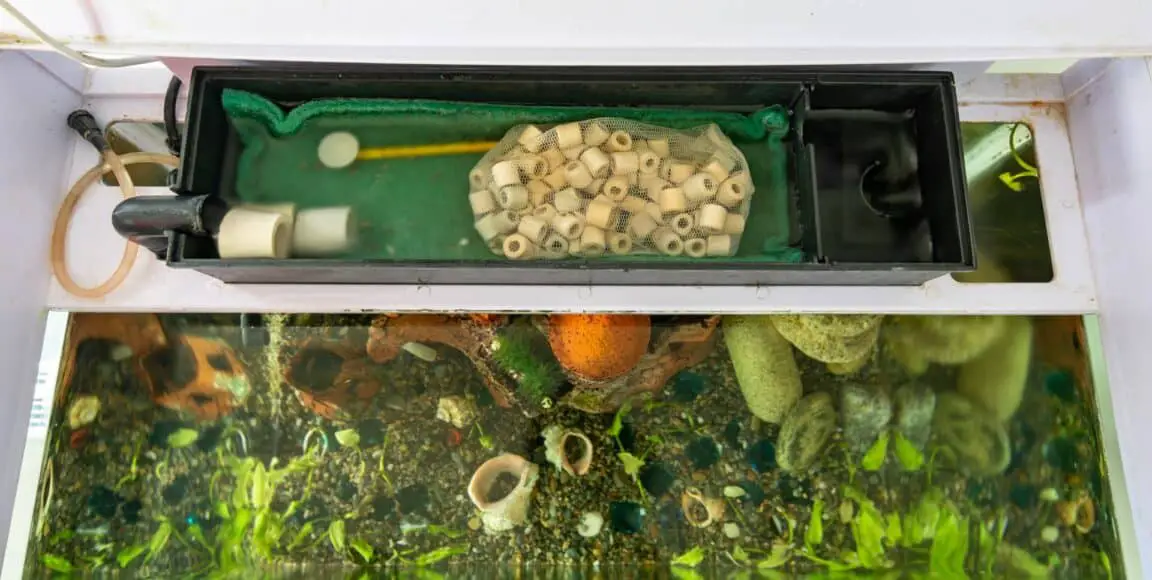
Dumbo halfmoon betta, just like any other betta fish, is sensitive to fast and strong water flow. Why? This is because it will be difficult for them to swim around if the current is too strong.
That’s why choosing a gentle and suitable filter for your elephant ear betta fish is a must!
It’s important to note that a water filter will help maintain the cleanliness of your fish tank, but a weekly partial water change is still needed to give your fish a healthy environment.
Recommended tank filter
- Dense floss removes particles and debris
- Activated carbon removes toxins, odors and discoloration
- Patented bio-holster removes toxic ammonia and nitrites
- Diffuser grid removes additional toxins while adding oxygen for more active fish
- Reduces splashing making the return exceptionally quiet
Prices pulled from the Amazon Product Advertising API on:
Product prices and availability are accurate as of the date/time indicated and are subject to change. Any price and availability information displayed on [relevant Amazon Site(s), as applicable] at the time of purchase will apply to the purchase of this product.
Water Quality
One of the most interesting things about elephant ear betta fish is that they can survive in environments with much more acidic pH levels.
They can live at a range from 6-8 but do best when it’s seven pH where all other aspects, such as temperature and oxygen level, are met.
Like other fish species, the secret is not to make the pH level perfect but to keep it stable. When pH is not maintained and inconsistent, your little friend may suffer from pH shock that may lead to death if not treated immediately.
If you are worried about the actual pH of your water, most pet stores will be able to test it for a small fee.
Another great option is to check the water yourself. Pick up a self-testing kit that detects changes in acidity levels in aquariums and periodically measures your tank’s pH.
This will help you avoid the risk of excess algae growth due to higher CO2 content from an unbalanced environment!
Additional resources:
- Fish Tanks for Beginners: Everything You Need to Know
- How to Keep a Betta Fish Tank Clean: Step by Step Guide
- What is the Best Betta Fish Tank Available?
Substrate
Substrate refers to the material that lines the bottom of your tank. It makes your tank look more aesthetically appealing and provides a home for beneficial bacteria that helps keep your betta fish tank clean.
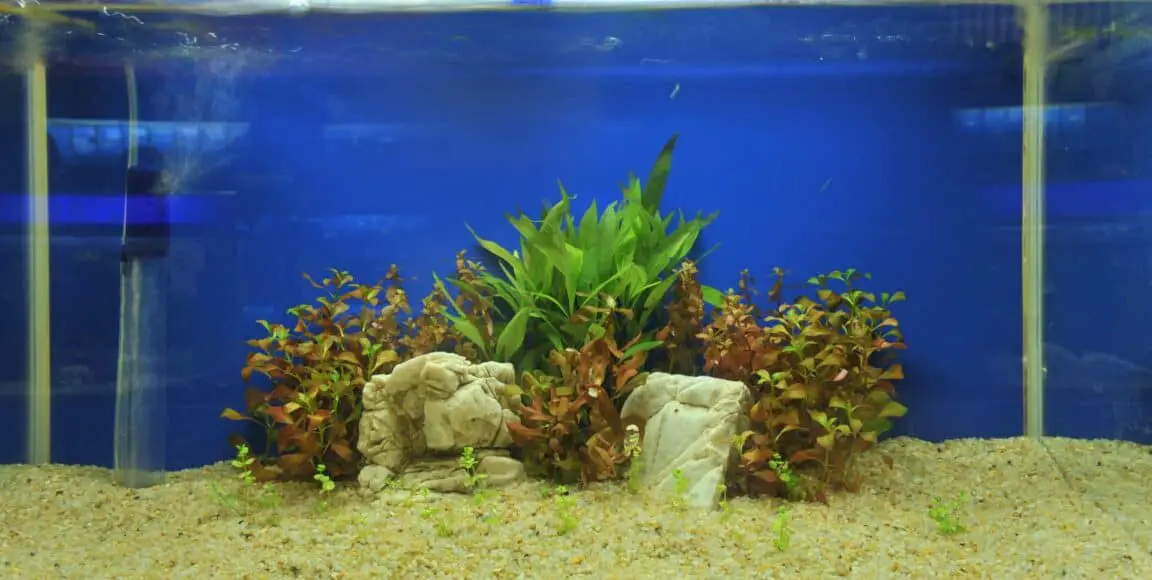
Substrates come in various colors, textures, and sizes. Common choices include the following:
Pebbles
Pebbles are small, round stones made of natural minerals and usually come in various colors. They are easy to clean and maintain and provide a good surface for beneficial bacteria to grow.
Gravel
A gravel substrate is one of the most popular choices for fish tanks. Gravel is relatively inexpensive, easy to find, and comes in various colors. It also provides a natural feeling for both you and your fish.
Sand
Many people choose sand as a substrate for their fish tanks because it is inexpensive and can provide a natural look. Sand can also help replicate the natural environment of some fish species. However, sand is not ideal for aquariums with plants.
Marble
The marble looks beautiful and can enhance the overall look of your tank. It’s also very durable and doesn’t need to be replaced often. However, they are not as natural looking as gravel or sand and can be expensive.
Each type has its own advantages and disadvantages, but they all serve the same purpose – to give your betta fish places to hide and make the tank feel more natural.
Plus, substrates also help to anchor your live plants in place and create a stable pH level.
For elephant ear bettas, sand or fine gravel is the best option since it has no sharp edges that could injure their fins.
Decorations
Most betta fish owners want to decorate their tanks with rocks, plants, and other items.
But when selecting decorations for your elephant ear bettas, avoid any items with sharp edges, such as coral rocks or ceramic pieces.
This is because the fish fins are very delicate and could be easily injured by these decorations. Instead, choose ones that have smooth edges.
When it comes to plants, opt for live plants that are super soft, like moss balls or java fern, so they don’t hurt the elephant ear betta.
Feeding your elephant ear betta fish
These aquarium fish enjoy a protein-rich diet, such as mosquito larvae, brine shrimp, blood worms, fish pellets, and flakes. They are carnivores and won’t survive by just merely eating plants.

Mixing up their diet and feeding them various foods is essential to ensure they get all the nutrition they need.
The best approach is to feed your elephant ear betta twice daily, but no more than what it can consume in a few minutes. Overfeeding can lead to health problems, such as swim bladder disease, so you must be careful with how much you give them.
Bettas eat food on the water’s surface, which is why shallow tanks are recommended, as it won’t be difficult for your betta to reach the surface.
- All Natural Protein Blending together premium wild sword prawns and Akiami paste shrimps (up to 50% of total content), this formulation is abounds with natural calcium and energized with a wealth of carefully selected ingredients like organic spinach, fresh squid, fresh-pick garlic, natural spirulina and seaweed. Its sure to help those picky show-grade fighting fish to develop the perfect body and natural colors.
- Premium Wild Sword Prawns Sword Prawns features a strong and unique taste that tops all other shrimps, making them the top choice by Michelin Restaurants. This food is simply irresistible to picky bettas.
- Great Granule Size for Bettas With the 1.5mm Granule, it is very for betta fish to consume and leaves the water clear for easier maintenance.
- Super Betta Food Its not only tasty, but it also keeps betta fish healthy! Our food is jam-packed with vitamins (A, C, D3, E, B1, B2, B6, B12) great for reaching full potential in size, color, fins, and A+ immunity!
- 3 Million CFUs/g Probiotics 3 million CFUs/g probiotics are within our food to automatically help dissolve fish excrements, residuals and keeps water clean. Other than that it helps fish to fully absorb nutrition, help to excretion, enhance the immune system and lower the risk of digestive proble
Prices pulled from the Amazon Product Advertising API on:
Product prices and availability are accurate as of the date/time indicated and are subject to change. Any price and availability information displayed on [relevant Amazon Site(s), as applicable] at the time of purchase will apply to the purchase of this product.
- Blue Flake (Triple Vitamin Boost, Natural Immunostimulant Beta-Glucan And Chitosan)
- Enhanced With Probiotics (Bacillus Sp) To Improve Digestion And Intestinal Wellbeing
- Less waste (cleaner aquarium)
- Ingredients Sourced From Us And Canada
- Made In The Usa
- Included Components: Fish F
Prices pulled from the Amazon Product Advertising API on:
Product prices and availability are accurate as of the date/time indicated and are subject to change. Any price and availability information displayed on [relevant Amazon Site(s), as applicable] at the time of purchase will apply to the purchase of this product.
Remember to give just the right amount of food and remove excess food lying on the bottom of the tank to avoid polluting the water and changing its pH level.
Related resources:
- Why Is My Betta Fish Spitting Out Food?
- Can Betta Fish Eat Bread?
- Betta Fish Doesn’t Eat: Everything You Need to Know
How to breed elephant ear betta or dumbo halfmoon?
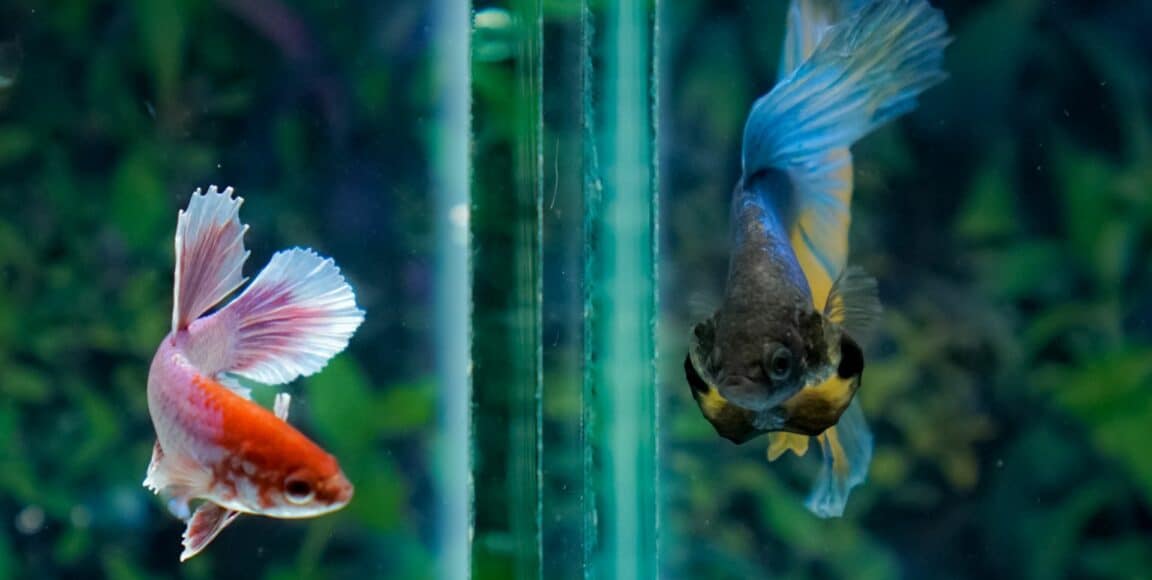
Like any other fish in captivity, breeding elephant ear betta fish is a challenging task. However, it is not entirely impossible.
Here are some tips on how you can breed a dumbo halfmoon betta:
- Set up a breeding tank following the recommended tank requirements.
- Choose a fish species you want to breed your dumbo betta with. Ensure your elephant ear betta is healthy and in the best condition (no parasites, disease, or fungus)!
- Do not choose bigger females over smaller males to have a higher success rate in breeding.
- Introduce the male and female fish to each other. The male will often flare their fins and show off to attract the female.
- The male elephant ear betta fish will start building a bubble nest once introduced to the female as a sign of showing off.
- If the female is interested, she will head to the male’s nest. The male, on the other hand, will try to include the female in the mating dance.
- The mating will begin after the dance, with both fish nosing each other’s sides until the male fish can turn over the female and tightly wrap around the female’s midsection.
- If this is successful, the female will lay eggs, and the male will look after them!
- Once all eggs are laid, remove the elephant ear betta female from the breeding tank and allow the male to look after them until they hatch.
- Then you can move the fry to a container of their own and nurse them until they are big enough to be transferred to a larger betta fish tank.
Can they have tankmates?
Many people keep betta fish and other fish in the same tank. This can be tricky, but it’s not impossible if you know what to look out for and do in advance.
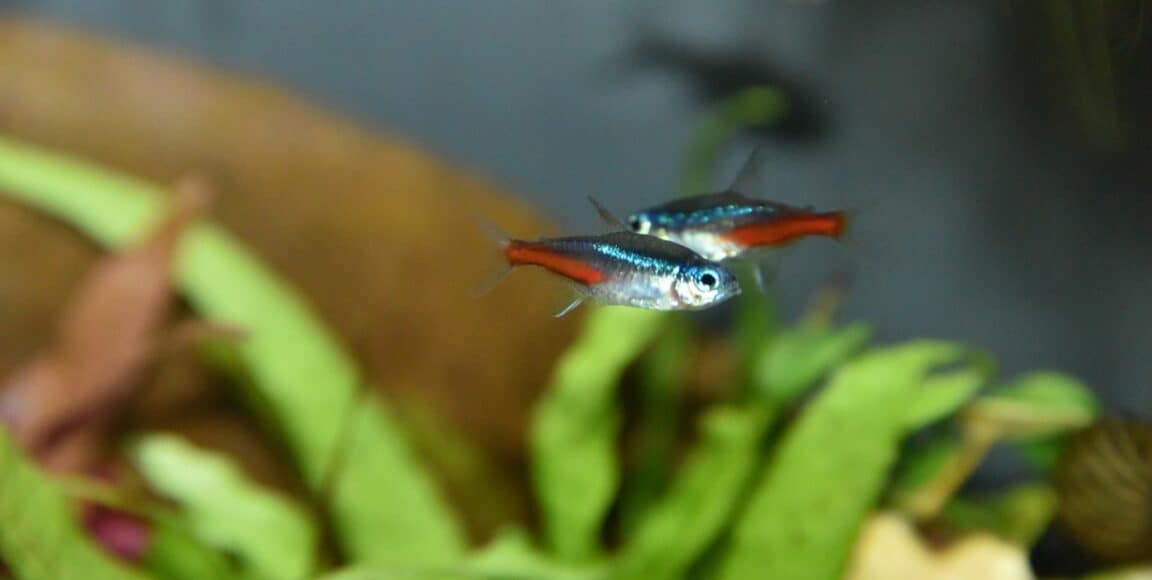
You need to know what the other species are like first and make sure that they’re compatible with each other.
Another thing is that an extra tank should always be ready just in case you have to quickly remove the other fish from the tank after introducing them together.
To assess compliance, track your animals closely within 72 hours– this will help gauge how well they are getting along or whether more work may need to be done before returning everyone to the same tank again!
But to give you an idea of the most suitable tankmates for your elephant ear betta, you can start with guppies, danios, neon tetras, and cloud minnows, which are non-aggressive, schooling freshwater fish.
Related: Fish You Can Put with a Betta
Facts about elephant ear bettas
- Elephant ear bettas belong to the list of the most expensive fish breed.
- It’s hard to breed elephant ear betta fish. There’s a slim chance of getting dumbo betta babies even if two fish with the same gene are paired.
- Elephant ear betta fish that live in the wild has three color variants, brown, dull green, and gray.
- Compared to the fins of other betta fish, elephant ear betta fins can grow up to five times larger.
- Male elephant ear betta fish are territorial and can be very aggressive, even with a female betta.
Conclusion
There is a variety of betta fish, but what makes elephant ear bettas extra special is the beauty of their appearance, including their unique color!
They are small, colorful fish that can be an exciting addition to your home aquarium.
Elephant ear bettas or dumbo halfmoon are pretty easy to take care of – requiring few resources for their upkeep.
If you’re still not quite sure what type of betta fish to buy, don’t despair. There are tons of breeds out there!
Some rarer types might be harder to find in a pet store and will cost more (especially if they come from abroad), but with the Internet as your resource for all things pet-related, getting a new fish friend has been neither easier nor less expensive than it is now.
Related:





